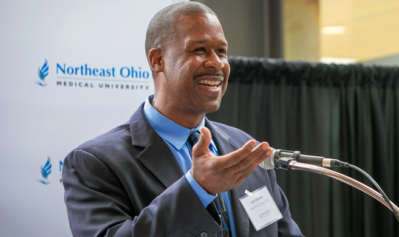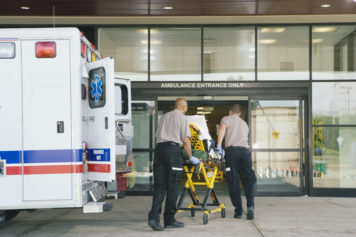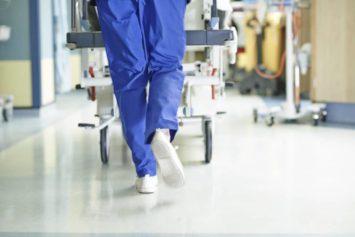If you’re Black and in need of medical care, you’re more likely than whites to receive subpar treatment from health care workers. That’s because institutional racism persists in medicine, resulting in African-Americans receiving fewer treatment options, less pain medication and poor communication from doctors, a number of studies have found.
A training program for health care workers and medical school personnel hopes to change this dynamic, however. It’s called the Every Day Bias Workshop and launched last year as a result of a partnership between the American Association of American Colleges and a consulting firm. The goal is for both physicians and medical school faculty members to examine how their biases influence their decision-making processes and interactions with patients, colleagues and students.
“This program helps people understand how to mitigate bias so they can make more equitable decisions,” Laura Castillo-Page, AAMC’s senior director for diversity policy and programs, told ThinkProgress. “We wanted to develop something that could be used in medical schools and teaching hospitals. Going through this training allows us to see how bias is in each of us.”
In fact, this October, medical professionals will take part in an Every Day Bias Workshop at Stanford School of Medicine to learn how to spot and then curb their racial biases. Although health care professionals should be impartial, they grow up with the same social conditioning that the rest of the public does, making them equally as likely to harbor biases related to race, gender, age and class. Left unchecked, these biases can and do lead health care workers to treat people differently.
A study conducted by the Institute of Medicine found that Black Americans received less-effective care than their white counterparts, socioeconomic and insurance status notwithstanding and patients of color also received fewer recommended treatments for chronic illness, including HIV/AIDS, cancer, and heart disease.
Poor African-Americans face even greater barriers to care because many health care organizations do not accept insurance plans designed for the underprivileged. Additionally, neighborhoods with high concentrations of minorities tend not to attract medical practices. This leads people in these neighborhoods to travel elsewhere to receive medical care or to completely go without it.
An infusion of minority doctors could curb racial bias in medicine, but the number of such physicians has actually decreased over the past two decades. Nationwide in 2012, fewer than 600 medical school grads were Black men. The fact that most of these grads came from predominantly Black universities such as Howard signals that “white” medical schools need to do more outreach to attract students of color. While minority doctors may also have racial biases, they’re more likely to communicate effectively with patients of color and prioritize their concerns.
“Physicians of color are also more likely to see patients of color who are in need, but no one is speaking for those populations,” said Walker Keenan, a medical student at the University of California, San Francisco. “That’s why we have to increase financial aid and residency positions for students of color. For us, there’s often a drop off in diversity between medical school and admission of people of color into residency programs.”
Keenan belongs to the medical student group #WhiteCoats4BlackLives, which works to end racism in medicine. The history of institutional racism in medicine makes it imperative for medical schools and organizations to address bias head on. African-Americans have not forgotten about the Tuskegee Syphilis Experiment in which researchers allowed the deadly disease to progress in poor Black men in Alabama. Black people also recall that United States hospitals were once racially segregated, with African-Americans openly receiving substandard care, and that thousands of women of color were forced to undergo state-sanctioned sterilization procedures. As a result, many Black people continue to distrust the health care industry today. U.S. medicine’s history of racial discrimination should be all the motivation health care workers need to ensure that they treat African-Americans just as well as other groups.
Taking implicit association tests to measure biases has apparently helped pharmacy students at UCSF. The test requires users to take a computerized survey that assesses their ideas about race, gender and age, to name a few. So far, medical workers have been receptive to such tests, Castillo-Page told ThinkProgress.
“If we can change people’s understanding of bias and ultimately their behaviors, admissions committees will be more open to students of different backgrounds,” she said. “The same thing applies in faculty recruitment and advancement and in the delivery of patient care. Through unconscious bias training, opportunities are opened for everyone, whether it be applying to medical school or in the delivery of health care.”



